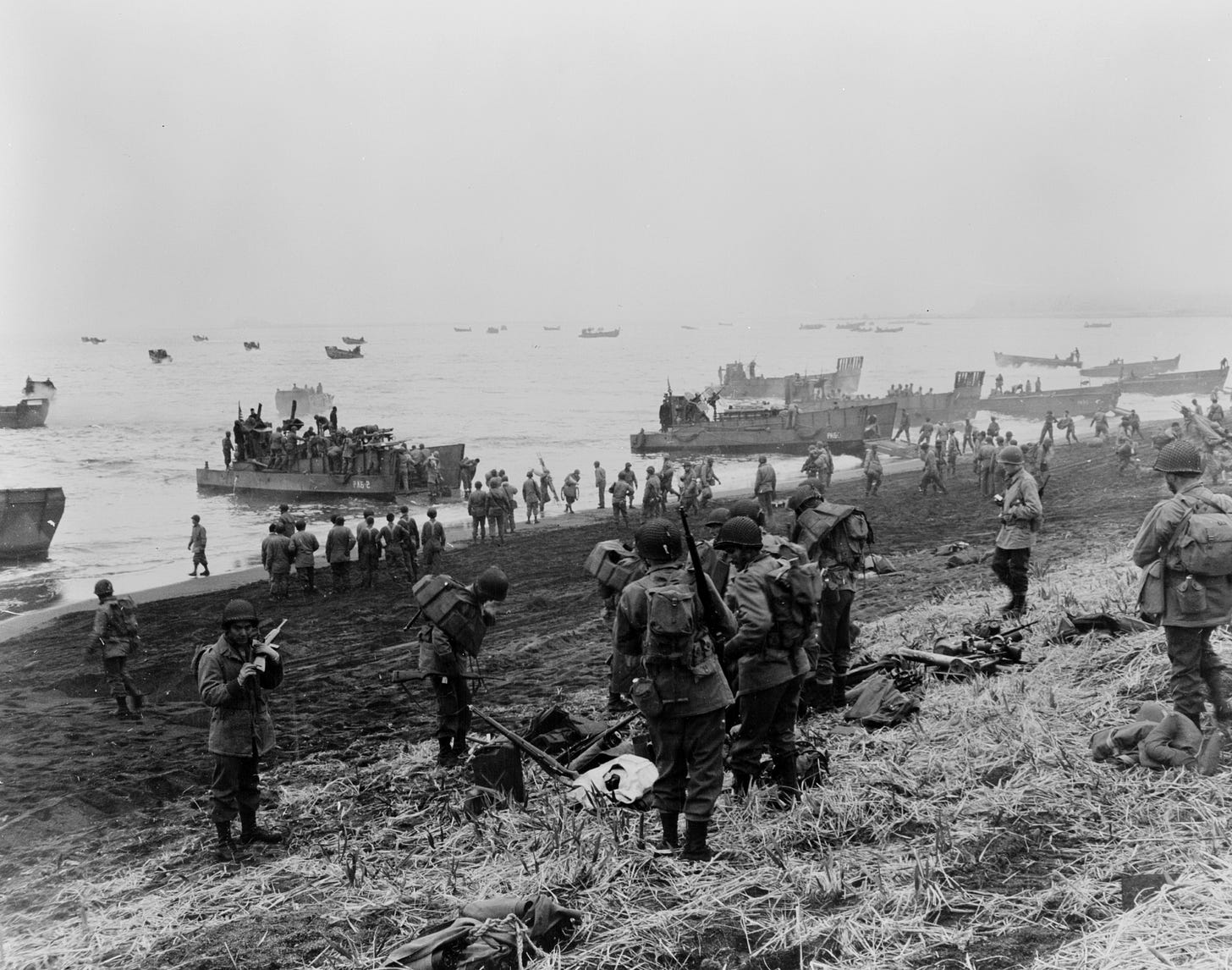TDIH: The Battle of Attu
Recovering Alaska's Aleutian Islands from the Japanese.
On this day in 1943, Japanese launch a banzai charge during the Battle of Attu. That battle would soon end with an American victory! The Japanese had held two of Alaska’s Aleutian Islands for nearly a year—but now we’d won one back. The second would soon follow.
The Battle of Attu was the only land battle fought in North America during World War II, yet somehow it has earned the tag, “The Forgotten Battle.” How can that be? We suffered more than 3,000 casualties, including 549 dead, at Attu. Shouldn’t more Americans know about it? And how did World War II make its way to the Aleutian Islands, anyway?
There are several theories. Possibly, the Japanese were worried that we’d use the islands to launch an attack. The Aleutian Islands stretch westward across the Pacific, so such a use was possible. Or perhaps the Japanese wanted to launch their own attack on us, using the islands as a base. Or maybe they were simply working on their defensive perimeter in the Pacific. To this day, Japanese motivations remain a bit unclear.
Whatever the reason, the Japanese seized the sparsely populated islands of Attu and Kiska on June 6 and 7, 1942.
Naturally, we immediately began planning to get our islands back.
It wouldn’t be easy. Remember, we were still regrouping from losses sustained at Pearl Harbor, Midway, and elsewhere—and Alaskan weather can complicate even simple tasks. Nevertheless, we soon secured a few Aleutian Islands and built airfields there. We’d need a place from which to stage an attack.
That attack finally came at Attu Island on May 11, 1943. “[W]e landed in fog as thick as mashed potatoes,” one private described, “expecting a wild dash across the beach with bullets flying, and there weren’t any.”
The Japanese had gone further inland. American troops would need to find them.
Unfortunately, nothing seemed to be going right. The soldiers weren’t used to the fog, wind, and snow. Their clothing and shoes were inadequate. Artillery and other machines kept getting stuck in mud. “The ground was new to us,” one officer later said, “the tundra and the holes and the snow gave us a bad time all the way. Some of the slopes were so straight up that we used ropes to haul our guns over them.”
The conflict continued in this difficult terrain for weeks. Our soldiers were suffering from hunger: Resupply planes couldn’t always find them in the dense fog. The cold was biting, and many soldiers developed trench foot. The task had to have seemed impossible at times. But by May 28, we’d confined enemy forces to an area around Chichagof Harbor. The Japanese made one last-ditch effort, starting a banzai charge during the early morning hours of May 29.
Their suicidal effort took Americans off guard.
“What a nightmare, a madness of noise and confusion and deadliness,” one officer would say. Another soldier would speak of his friends who were too slow to get out. “They both got bayoneted in their pup tents,” he concluded.
The element of surprise still wasn’t enough. The Japanese were badly outnumbered, and they were losing. They considered surrender dishonorable, so they began killing themselves by holding grenades to their chests. The battle was effectively over—and American forces would also recover Kiska, uncontested, several weeks later.
It's been more than 80 years, but perhaps today is a good day to finally remember the thousands of “forgotten” heroes who fought at Attu.
Sources can always be found on my website, here.



The unknown battle is a good description of Attu. In my 73 years I have never heard this story. What a tragedy that is especially to the 3,000 injured and the 549 KIA.
Thank you Tara for sharing this story in their memories.
❤️🇺🇸🇺🇸🇺🇸
Thanks Tara for another seldom know battle in the Pacific theater. This fight had a lot of causalities but with the upcoming battles it was soon forgtten. Americans need to remember freedom is never free.